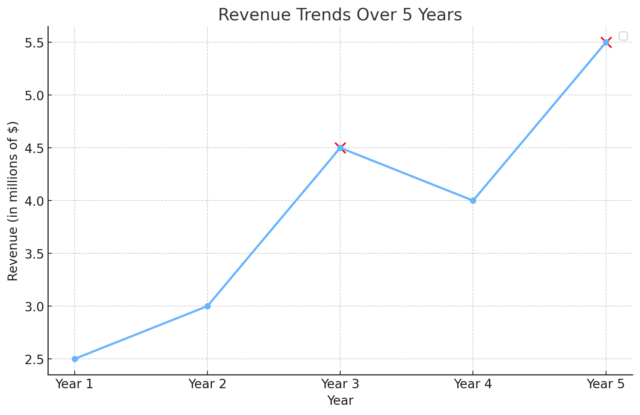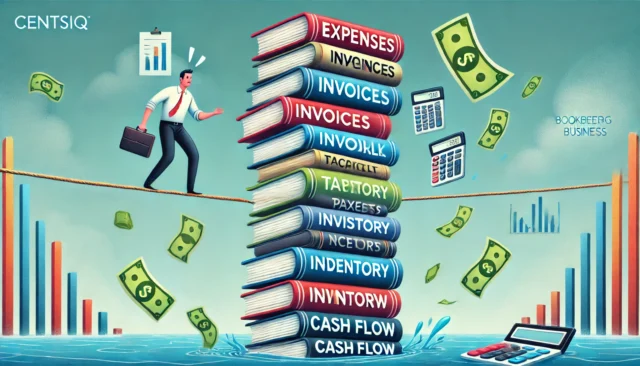Are you a small business owner drowning in data? You’re not alone. In this comprehensive guide, we’ll explore how small business analytics can transform your operations, boost profits, and give you a competitive edge. Let’s dive into the world of numbers and emerge with actionable insights!
Table of Contents
- 1 The Data Dilemma: When Numbers Become Overwhelming
- 2 Demystifying Small Business Analytics
- 3 The Four Types of Small Business Analytics: A Simple Breakdown
- 4 DIY Data Analytics: Tools and Techniques for the Budget-Conscious
- 5 Excel: The Unsung Hero of Small Business Analytics
- 6 Google Data Studio: Visualizing Success
- 7 Microsoft Power BI
- 8 Python and R: For the Ambitious Small Business Owner
- 9 When to Call in the Pros: Knowing Your Limits
- 10 The Future of Small Business Analytics: Data-Driven Decision Making
The Data Dilemma: When Numbers Become Overwhelming
My Friend’s Small Business Struggle: Drowning in Data
Picture this:
It’s Friday night, and while most people are winding down, Sarah, a small business owner, is hunched over her laptop. She’s drowning in a sea of spreadsheets, trying to make sense of over 6,000 incoming payments, an equal number of invoices, and a staggering 25,000 line items detailing costs. Sound familiar?

The Turning Point: Recognizing the Need for Small Business Analytics
For Sarah, the turning point came when she realized she was making decisions based on gut feeling rather than solid information. She knew she had the data to make informed choices, but couldn’t extract the insights she needed. This is where data analytics comes in.
Demystifying Small Business Analytics
What is Data Analytics and Why Does it Matter?
Data analytics for small businesses is the process of examining data to draw conclusions and make decisions. It’s like being a detective, solving business puzzles instead of crimes. With data analytics, you can answer crucial questions like:
- Which products are most profitable?
- Who are your best customers?
- When do you make the most sales?
- Where are your biggest expenses?
The Four Types of Small Business Analytics: A Simple Breakdown
- Descriptive Analytics: The “what happened” of data analytics.
- Diagnostic Analytics: The “why did it happen” part.
- Predictive Analytics: Uses historical data to make educated guesses about future trends.
- Prescriptive Analytics: Predicts what might happen and suggests actions to achieve the best outcome.
DIY Data Analytics: Tools and Techniques for the Budget-Conscious
Small Business Analytics tools don’t have to break the bank. Here are some affordable options for DIY data analysis:
Excel: The Unsung Hero of Small Business Analytics
Microsoft Excel is a powerful tool for data analytics. Key features include:
- VLOOKUP for searching specific information
- Conditional Formatting for highlighting trends
- Power Query for cleaning and transforming data
Google Data Studio: Visualizing Success
Google Data Studio is a free tool for creating stunning visual reports. Benefits include:
- Easy data connection to various sources
- Drag-and-drop report building
- Interactive reports for real-time data exploration
Microsoft Power BI
This tool is highly favored by small businesses for its intuitive interface and integration with Excel, making it easy to visualize and analyze data. It allows businesses to generate meaningful insights without needing extensive technical expertise. Power BI offers a free version with basic features, while paid plans start at a very affordable rate, providing scalability as your business grows
Python and R: For the Ambitious Small Business Owner
For those ready to take their data analysis to the next level, Python and R offer:
- Ability to handle large datasets
- Advanced statistical analysis capabilities
- Powerful data visualization libraries
When to Call in the Pros: Knowing Your Limits
While DIY data analysis is great, sometimes you need professional help. Signs you might need an expert include:
- Your data is too complex
- You need advanced analytics
- Data analysis is consuming too much of your time
- You’re not getting actionable insights
- You need custom solutions
The Future of Small Business Analytics: Data-Driven Decision Making
Embracing a Culture of Analytics
Creating a data-driven culture in your small business involves:
- Encouraging curiosity and asking “why”
- Making data accessible to all team members
- Celebrating data-driven wins
- Investing in training
- Leading by example
Staying Ahead: Continuous Learning and Adaptation
To stay on top of the data analytics game:
- Follow industry blogs and publications
- Attend workshops and webinars
- Join online communities for data enthusiasts
Data analytics for small businesses isn’t just a trend—it’s a necessity in today’s competitive landscape. By embracing data-driven decision making, you’re not just keeping up; you’re staying ahead of the curve. Ready to transform your small business with the power of data? Start small, be consistent, and watch as your data tells the story of your business success!
Want to learn more about implementing data analytics in your small business? Contact Us.







